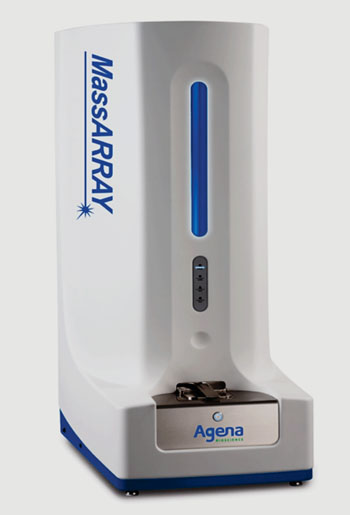New Light Shed on the Cause of Chronic Fatigue Syndrome
By LabMedica International staff writers
Posted on 28 May 2015
The transient receptor potential (TRP) superfamily in humans comprises 27 cation channels with permeability to monovalent and divalent cations and these channels are widely expressed within humans on cells and tissues and have significant sensory and regulatory roles on most physiological functions.Posted on 28 May 2015
Chronic fatigue syndrome/myalgic encephalomyelitis (CFS/ME) is a highly debilitating disorder characterized by profound fatigue, muscle and joint pain, cerebral symptoms of impaired memory and concentration, impaired cardiovascular function, gut disorder and sensory dysfunction such as noise intolerance and balance disturbance.

Image: The MassARRAY mass spectrometer (Photo courtesy of Agena Bioscience).
Scientists at Griffith University (Gold Coast, QLD, Australia) and their colleagues recruited 115 CFS patients and 90 non-fatigued controls. Of the115 CFS patients (mean age: 48.7 ± 1.1 years), 84 (73.04%) were women and 31 (26.96%) were men. The 90 non-fatigued controls (mean age: 46.5 ± 1.2 years) comprised 59 (65.56%) women and 31 (34.44%) men. Ten milliliters of whole blood samples were collected from all participants in to ethylenediaminetetraacetic acid tubes.
Genomic DNA was extracted from all whole blood samples using the Qiagen DNA blood mini-kit (Qiagen; Venlo, Netherlands). The Nanodrop (Nanodrop; Wilmington, DE, USA) was used to assess the quality and quantity of the DNA extracted. Approximately 2 μg of genomic DNA was used in the single nuclear polymorphisms (SNP) assay. SNP analysis was performed using the MassARRAY iPLEX Gold Assay and following the iPLEX Gold reaction, MassARRAY was performed using the MassARRAY mass spectrometer, (Agena Bioscience; San Diego, CA, USA).
Of the 240 SNPs that were examined in the study, 233 were successfully identified in both participants groups and 13 were observed to be significantly associated with CFS. Nine of these SNPs were associated with transient receptor potential melostatin (TRPM3) while the remaining SNPs were associated with TRPA1 (ankyrin) and TRPC4 (canonical).
Pete Smith, MBBS, FRACP, PhD, a professor of immunology and a coauthor of the study said, “Important signaling mechanisms are disrupted as a result of these genetic changes involving the detection and response to threats. These are primitive genes that are involved in many cellular signals in the brain, gut, cardiovascular and immune systems, as well as in the mediation of pain.” The study was published on May 10, 2015, in the journal Immunology and Immunogenetics Insights.
Related Links:
Griffith University
Qiagen
Agena Bioscience











.jpg)

